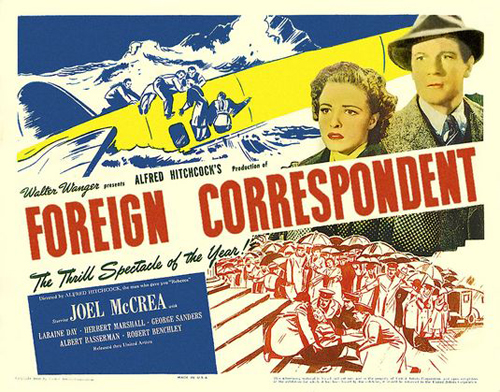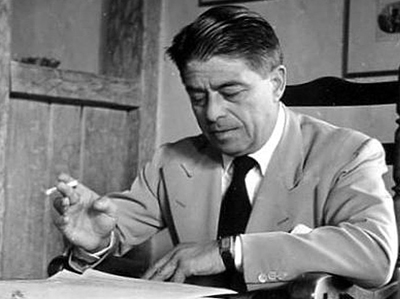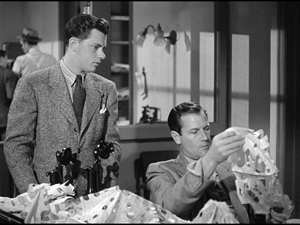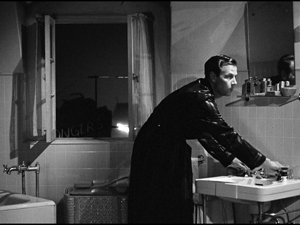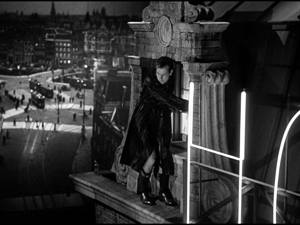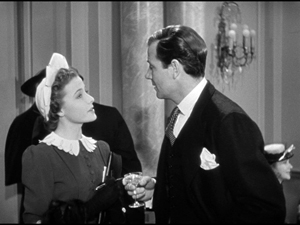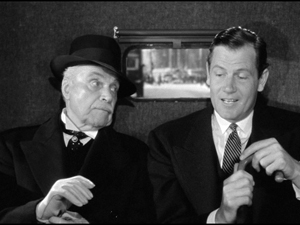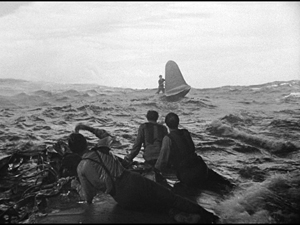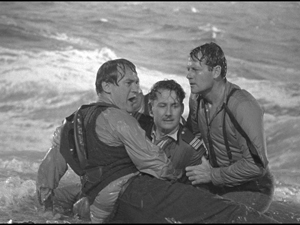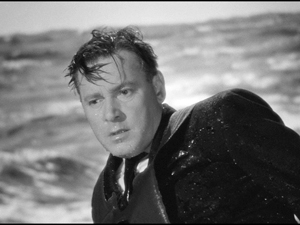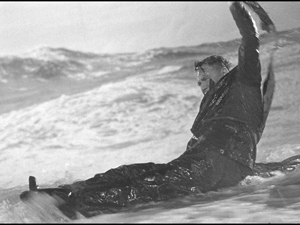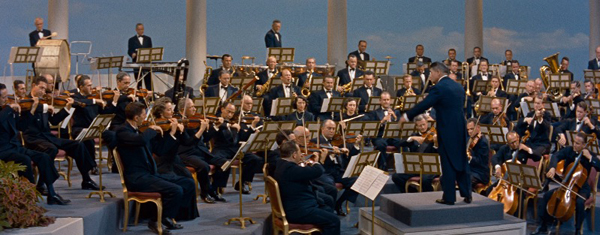Spies face the music: Jeff Smith on FOREIGN CORRESPONDENT
Wednesday | November 30, 2016 open printable version
open printable version
DB here: Here’s another guest contribution from colleague, Film Art collaborator, and pal Jeff Smith. He inaugurates a series of entries tied to our monthly Observations on Film Art videos on FilmStruck.
About a month ago, a new streaming service for film lovers debuted. Its name is FilmStruck and it’s a joint venture of Turner Classic Movies and the Criterion Collection.
As regular readers of the blog already know, David, Kristin, and I have launched a series for FilmStruck. Every month, we’ll be featured in short videos that offer appreciations of particular films and filmmakers. In baseball lingo, I got the leadoff spot. As the first up, I offered an overview of the principal musical motifs in Alfred Hitchcock’s Foreign Correspondent. Below is a supplement to the video that goes into a little more depth regarding the way Alfred Newman’s score for Foreign Correspondent fits into the film’s larger narrative strategies.
Fair warning: there are some spoilers in what follows. Some of you who are FilmStruck subscribers or owners of the Criterion disc may want to watch this Hitchcock classic before proceeding.
Founding a Hollywood dynasty
Alfred Newman.
If you were looking for someone whose work epitomized the qualities of the classical Hollywood score, Alfred Newman would be a pretty good candidate for the job.
Newman’s career in Hollywood began when Tin Pan Alley stalwart, Irving Berlin, recommended him for the 1930 musical, Reaching for the Moon. Having worked for years as a music director on Broadway, Newman planned to stay for only three months. But the lure of the Silver Screen was too strong. Newman spent the next forty years working in Hollywood.
In 1931, Newman became the musical director at United Artists, working mostly for producer Samuel Goldwyn. He also established himself as one of the industry’s leading composers, contributing to nearly ninety films over the course of the 1930s and earning nine Oscar nominations in the process. Newman’s most memorable early scores included such titles as The Prisoner of Zenda, The Hurricane, The Hunchback of Notre Dame, and Wuthering Heights. Eventually, he would leave Goldwyn to take over the music department at 20th Century-Fox, a position he held for more than twenty years.
Alfred, however, would be just one of several Newmans who would make the name synonymous with the Hollywood sound. Alfred would establish a film composing dynasty that would come to include his brothers Lionel and Emil; his sons, Thomas and David; and his nephew, Randy.
Overture, hit the lights….
If you asked most film music aficionados for their favorite Alfred Newman scores, I suspect Foreign Correspondent would be pretty low on the list. Most fans of the composer’s work would likely opt for one of the later Fox classics he scored, such as How Green Was My Valley (1941), A Tree Grows in Brooklyn (1945), The Captain from Castile (1947), or The Robe (1953). Yet, if you want to get a handle on the basic features of the classical paradigm, Foreign Correspondent’s typicality makes it more useful as an exemplar. Newman’s music neatly illustrates several of the traits commonly associated with the classical Hollywood score’s dramatic functions.
One of these characteristic traits is Newman’s use of leitmotif as an organizational principle. Foreign Correspondent’s score is organized around five in all. The first is a theme for the film’s protagonist, Johnny Jones. The second is a theme for Carol, Johnny’s love interest in the film. As is typical of studio-era scores, both themes are introduced in the film’s Main Title.
Like an overture, the Main Title previews the two most important musical themes in the film. The A theme is upbeat, sprightly, and lightly comic. It captures some of Johnny’s ebullience and masculine charm, and it helps establish the tone of the early scenes, which draw upon the conventions of the newspaper film. The B theme is slower and more lyrical. It features the kind of lush orchestrations for strings that became a hallmark of Newman’s style.
Each theme roughly correlates with the dual plot structure common to classical Hollywood narratives. The A theme previews the main plotline focused on Johnny’s efforts as an investigative reporter. The B theme previews the story’s secondary plotline: the budding romance between Johnny and Carol.
Both themes recur throughout the remainder of the movie. In fact, Johnny’s theme returns even before the opening credits have ended, appearing underneath a title card valorizing the power of the press. In contrast to the lively, spunky version heard earlier, Newman gives it a maestoso treatment, slowing the tempo and orchestrating it for brass. In this instance, Newman’s arrangement of Johnny’s theme is attuned less to the brashness of his character and more to the social role that newspaper reporters play as a source of information to the world.
Up until this point, the music simply primes us for what is to come. Johnny’s theme returns about two minutes later when he is first introduced.
The reprise of his theme makes explicit the Main Title’s tacit association between music and character. Here, though, it plays in a jazz arrangement as a slow foxtrot. Newman’s arrangement nicely captures the tone of these early scenes, which display the lightness and pacing of other newspaper comedies.
It returns 22 more times in the film. In all, Johnny’s theme accounts for more than a quarter of the film’s 94 music cues. Usually, the theme functions to underline Johnny’s heroism and resourcefulness as in the scene where he gives chase to Van Meer’s assassin. At one point, Johnny even whistles his theme. This occurs in the scene where he eludes a pair of suspicious men posing as police by pretending to draw a bath and crawling out the window.
In contrast, Carol’s theme is used less frequently, appearing in about thirteen cues in all. After its introduction in the main title, it returns when Johnny and Carol first meet at the luncheon sponsored by the Universal Peace Party. Johnny unknowingly insults Carol, first by mistaking her for a publicist, and then by expressing skepticism about the organization’s mission, griping about well-meaning amateurs interfering in international affairs. Newman’s theme hints at Carol’s attraction to Johnny despite his obvious boorishness. The music says what the characters can’t or won’t say. As Johnny and Carol trade insults, Carol’s theme captures the romantic spark that lurks beneath their badinage.
The theme’s other uses often work along similar lines, providing an emotional resonance to the couple’s expression of feelings for one another. A good example is found in the scene where Carol and Johnny huddle together on the deck of a steamship. Here, as a pair of refugees, each member of the couple declare their love for one another and their desire to marry.
Music for the hope of the world
In addition to these two principal themes, the score also utilizes three other themes and motifs to represent important secondary characters. A theme for Professor Van Meer is introduced when Johnny spots him getting into a taxicab.
It returns nine more times in the film in scenes that feature the character or make reference to him.
The theme itself is simple, slow, stately, and quite frankly, a little bit boring. Indeed, if it wasn’t for the multiple references to a “Van Meer Theme” on the cue sheet for Foreign Correspondent, the music would simply blend into the other material that surrounds it.
The orchestration of the theme for solo wind instruments, usually an oboe, gives it a kind of pastoral feeling. The image of peaceful shepherds is likely an appropriate one for Van Meer, who functions as a stand-in for a global desire to avoid armed conflict. Yet, both the character and Newman’s musical theme for him seem nondescript, making Van Meer seem like little more than the walking embodiment of an abstract ideal of world harmony.
Truth be told, Van Meer mostly operates in Foreign Correspondent as the classic Hitchcock MacGuffin–that is, the thing the characters all want, but with which the audience need not concern itself. When Van Meer appears to be assassinated, it sets in motion a chain of events that uncovers a conspiracy organized through Steven Fisher’s World Peace Party. Van Meer is the object that all the characters want to find, and the search for him drives the narrative forward. Yet the character himself has about as much personality as the microfilm in North by Northwest. Newman’s nondescript melody seems to fit the “blank slate” quality of Van Meer himself.
Like the classic MacGuffin, Van Meer’s function as something of an empty vessel allows his theme to be used several times late in the film in scenes where the character isn’t physically present. Although the norm is to use characters’ themes or leitmotifs when they are onscreen, Newman’s treatment of Van Meer shows they can evoke absent characters. This occurs, for example, in a scene where Scott ffolliot explains to Stephen Fisher that he’s arranged for the kidnapping of Carol. Fisher asks ffolliot why he would do such a thing, and ffolliot replies that he wants to know where Stephen has stashed Van Meer.
As we’ll see, Fisher has a theme of his own that itself appears several times in this same scene. But the use of Van Meer’s theme in this context becomes a way of signifying both the character and the peaceful values that he represents – that is, values that Fisher seeks to destroy.
And though Van Meer’s music is a bit dull, the theme proves a bit more interesting when one considers the way it works within Hitchcock’s larger strategies of narration. At a key point, Hitchcock and Newman use the Van Meer theme to mislead the audience about what has just transpired onscreen. I’m referring here to the moment when Van Meer appears on the steps just as the Peace conference in Amsterdam is about to commence.
The theme is cued by Johnny’s glance offscreen after briefly chatting with Fisher, his publicist, and a diplomat. Hitchcock cuts to a shot from Johnny’s optical POV that shows Van Meer climbing up the staircase. We return to Johnny, who smiles and walks out of the frame. Johnny and Van Meer meet in a two-shot where the former offers a warm greeting. A cut to Van Meer’s reaction, though, reveals a blank stare, even as Johnny tries to remind the elderly professor of their previous encounter in the taxi.
The moment is an important one, but before the viewer can even grasp its significance, the two men are interrupted by a request for a photograph. Hitchcock then tracks in on the newsman, who surreptitiously sneaks a gun next to the camera he is holding. He pulls the trigger, and Hitchcock cuts to a brief insert of Van Meer, who has been shot in the face.
As I noted earlier, the assassination we witness is a key turning point in the story, and Hitchcock handles the scene with considerable finesse. Almost unnoticed, though, is the fact that Hitchcock and Newman cleverly use Van Meer’s musical theme as a form of narrative deceit. At first blush, the musical theme helps to reinforce Van Meer’s identity, serving the kind of signposting function that some film music critics believed was a hackneyed device. As we later learn, though, the murder victim is not Van Meer, but rather a double killed in his place to foment international tensions. This information ultimately recasts the old man’s seeming failure to recognize Johnny. As Van Meer’s double, these two men have never actually met.
Has Hitchcock played fair in using Van Meer’s theme for a character that is not Van Meer but only looks like him? Perhaps, but the creation of this red herring is justified if one considers the fact that composers frequently write cues meant to reflect or convey a character’s point of view. Every composer must make a choice about whether to write a cue from the particular perspective of the character or the more global perspective of the film’s narration. Newman might have opted for conventional musical devices that connote suspense (ostinato figures, string tremolos, low sustained minor chords), and these would have signaled to the viewer that Van Meer is in peril, thereby creating a heightened anticipation of the violence that erupts in the scene. Instead, though, following the visual cues provided by Hitchcock’s cinematography and editing of the scene, Newman plays Johnny’s perspective and his recognition of Van Meer as he approaches the building’s entrance. By combining two common tactics–leitmotif and character perspective – Newman and Hitchcock briefly mislead the audience in order to create two surprises: the first when it appears that Van Meer is killed and the second when Van Meer is discovered inside the windmill and proves to be very much alive.
Menace (without the Dennis)
There is also a brief six-note motif used to signify the conspirators as a group. Labeled the “menace” motif, it is introduced just after Van Meer’s apparent assassination. In the chase that follows, Newman alternates between the “menace” motif and Johnny’s theme in order to sharpen the conflict and to capture the ebbs and flows of our hero’s dogged pursuit of the bad guys.
The motif returns, though, at just about any point where one of the group’s henchmen gets up to no good. In the scene inside the windmill, the menace motif appears several times to underscore the kidnappers’ nefarious scheme. Johnny sneaks inside the windmill, and after locating Van Meer, he tries to rescue him only to find out that the elderly professor has been drugged. As Johnny tries to figure out his next move, muted trumpets play the “menace” motif, signaling the kidnappers’ approach and thereby heightening the scene’s suspenseful tone.
Here again, Newman’s thematic organization reinforces a larger narrative tactic in Hitchcock’s film. Herbert Marshall serves as the typical suave villain commonly found in the Master’s oeuvre and Edmund Gwenn steals the show as Johnny’s would-be assassin, Rowley. But the rest of the conspirators are a largely undistinguished lot, and the use of a single motif for the group in toto reflects their relative impersonality. Unlike North by Northwest, where Martin Landau makes a vivid impression as Van Damm’s reptilian assistant Leonard, this spy ring seems to be filled out by thugs from Central Casting.
Father, leader, traitor, spy
Besides motifs for Johnny, Carol, Van Meer and the conspirators, there is also a short motif for Carol’s father, Stephen Fisher. It is harmonically and melodically ambiguous, structured around the rapid, downward movement of a chromatic figure.
In classical Hollywood practice, a leitmotif is usually introduced when the character first appears onscreen. But in an unusual gesture, Newman and Hitchcock resist this convention. The motif does not appear until more than eighty minutes into the film in the aforementioned scene just before ffolliot tries to blackmail Fisher into divulging Van Meer’s location.
By withholding Fisher’s motif, Hitchcock and Newman avoid tipping their hand too early. Since Fisher is later revealed to be the leader of the spy ring, the score circumspectly avoids comment on him in order to preserve the plot twist.
Several cues featuring Fisher’s motif return in the scene where Johnny, Carol, ffolliot, and the other survivors of the plane crash cling to wreckage waiting to be rescued. Carol spots the plane’s pilot stranded on its tail.
He swims over to the group and clambers about the wing. The pilot’s added weight threatens to upend the wing, thereby endangering everyone sitting atop it.
Recognizing this, the pilot asks the others to let him go so that he can simply “slip away.” Fisher overhears this exchange and decides to remove his life jacket and dive into the waters himself, leaving room on the plane’s wing for the rest of crash’s survivors.
The harmonic and melodic ambiguity of Fisher’s motif is most pronounced here, a moment where the character’s duality is also most clearly revealed. Is this a heroic act of self-sacrifice, an act of atonement for the damage Fisher has done to both his daughter’s reputation and his organization’s peaceful cause? Or has Fisher taken the coward’s way out, committing suicide in order to avoid facing the consequences of his actions?
Newman’s rather opaque musical motif doesn’t seem to take sides on this question, leaving Fisher’s motivation more or less uncertain. But this, too, is in keeping with the basic split between the character’s public and private personae. Introduced earlier as Carol’s father, Fisher appears to be cultured and debonair. Yet, when he seeks to extract information from a reluctant captive, Stephen resorts to the physical torments used by two-bit gangsters to make mugs talk. Like those gangsters in the 1930s, Fisher refuses to be taken alive and is swallowed up in briny sea. Still, his action does help to save other lives, and in this way, Fisher enables Carol to find a small measure of grace in the final memory she will have of him.
Putting earworms inside actual ears
As the principal composer of music for Foreign Correspondent, Newman had a major impact on the film’s ultimate success. Yet Newman was not responsible for the music that has engendered the most attention in critical work on the film. I’m referring here to two source cues written by Fox staff arranger, Gene Rose, that are featured in the scene where Van Meer is psychologically tortured. His captors use sleep deprivation techniques to elicit van Meer’s cooperation, including bright lights and the repeated playing of a jazz record. The two cues received rather cheeky descriptions on the cue sheet for Foreign Correspondent: “More Torture in C” and “Torture in A Flat.”
The use of jazz for these cues is likely a little bit of wicked humor on Hitchcock’s part. Despite its popularity as dance music in the 1930s, some listeners undoubtedly believed that jazz was little more than noise with a swinging rhythm. From a modern perspective, though, the scene eerily anticipates the “enhanced interrogation” techniques that would become notorious at Guantánamo and Abu Ghraib. As The Guardian reported in 2008, US military played Metallica’s “Enter Sandman” at ear-splitting volume for hours on end, both at Guantanamo and at a detention center located on the Iraqi-Syrian border. At the other end of the musical spectrum, one of the other pieces played repeatedly was “I Love You” sung by Barney the purple dinosaur. Presumably the first was selected because of its aggressiveness, the latter because of its insipidness. But the Barney song has the distinction of being characterized by military officials as “futility” music – that is, its use is designed to convince the prisoner of the futility of their resistance.
Although, in 1940, Hitchcock could not have envisioned the use of heavy metal and kidvid music as elements of enhanced interrogation, the scene from Foreign Correspondent is eerily prescient. Viewed today, the scene also carries with it a strong element of political critique insofar as it associates such psychological torture techniques with a bunch of “fifth columnists” who are willing to commit murder and even engineer a plane crash in order to achieve their political ends. Touches like these make Foreign Correspondent seem timely today, more than seventy-five years after its initial release.
Alfred Newman the Elder
After Foreign Correspondent, Alfred Newman would go on to score more than a hundred and thirty feature films, and earn several dozen more Academy Award nominations. His nine Oscar wins remain an achievement unmatched by any other film composer. Newman died in Hollywood in 1970 at the age of 69, just before the release of his last picture, the seminal disaster movie, Airport. His work on Airport received an Oscar nomination for Best Original Score, the 43rd such nomination of his long and distinguished career.
For some film music scholars, Newman’s death marked the end of an era, as his career was more or less contemporaneous with the history of recorded synchronized sound cinema in Hollywood. As fellow composer Fred Steiner wrote in his pioneering dissertation on the development of Newman’s style:
As things are, we can be grateful for the dozen or so acknowledged monuments of this twentieth-century form of musical art— absolute models of their kind— that Newman did bestow on the world of cinema. Fashions in movies and in movie music may come and go, but scores such as The Prisoner of Zenda, Wuthering Heights, The Song of Bernadette, Captain From Castile, and The Robe are musical treasures for all time, and as long as people continue to be drawn to the magic of the silver screen, Alfred Newman*s music will continue to move their emotions, just as he always wished.
Because of its typicality, Foreign Correspondent may well seem like a speed bump on Newman’s road to Hollywood immortality. Yet it remains a useful introduction to the composer himself, who along with Max Steiner and Erich Wolfgang Korngold, is part of a triumvirate that would come to define the sound of American film music.
For more on music in Alfred Hitchcock’s films, see Jack Sullivan’s encyclopedic Hitchcock’s Music. For more on the production of Foreign Correspondent, see Matthew Bernstein’s Walter Wanger: Hollywood Independent. Readers interested in learning about Alfred Newman’s career should consult Fred Steiner’s 1981 doctoral dissertation, “The Making of an American Film Composer: A Study of Alfred Newman’s Music in the First Decade of the Sound Era,” and Christopher Palmer’s The Composer in Hollywood.
Tony Thomas’s Film Score: The Art & Craft of Movie Music includes Newman’s own account of his work for the Broadway stage before coming to Hollywood. Readers interested in an overview of the classical Hollywood score’s development should consult James Wierzbicki’s excellent Film Music: A History.
Alfred Newman conducts his most famous film theme, Street Scene, in the prologue to How to Marry a Millionaire (1953).












